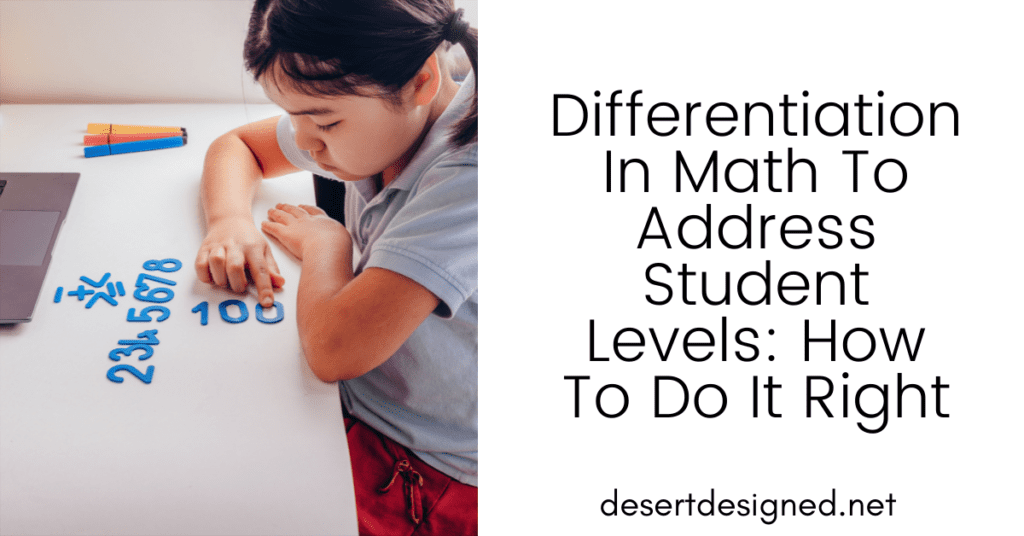
Students are different. I know this doesn’t come as a shock for you, but it’s a fact of teaching. The challenge is to master differentiation in math instruction so that these different students can all learn at their own pace. The material will be accessible to them and live up to their potential.
No Two Students are the Same and Differentiation in Math is Hard to Pull Off
Students are different, yet their differences are seldom consistent, folding in an extra challenge for teachers. Next, we will explore how student differences appear and the challenges for both teachers and students.
Differing Ability Levels
The most apparent differences between students come in their ability levels. All people come into a classroom with a wide range of background knowledge, skills, and retaining information.
These different abilities come from a mix of biological to social to environmental reasons. Our brains do not all work at the same pace and in the same way. Please do not mistake this for lack of ability to learn, but it creates a situation where students come into our classrooms from different starting points. Some of your students love to read and read at home without needing to be prompted to do so, while others despise reading and barely practice. Additionally, in some cases, students are required by their parents to spend extra time on academic endeavors outside of school.
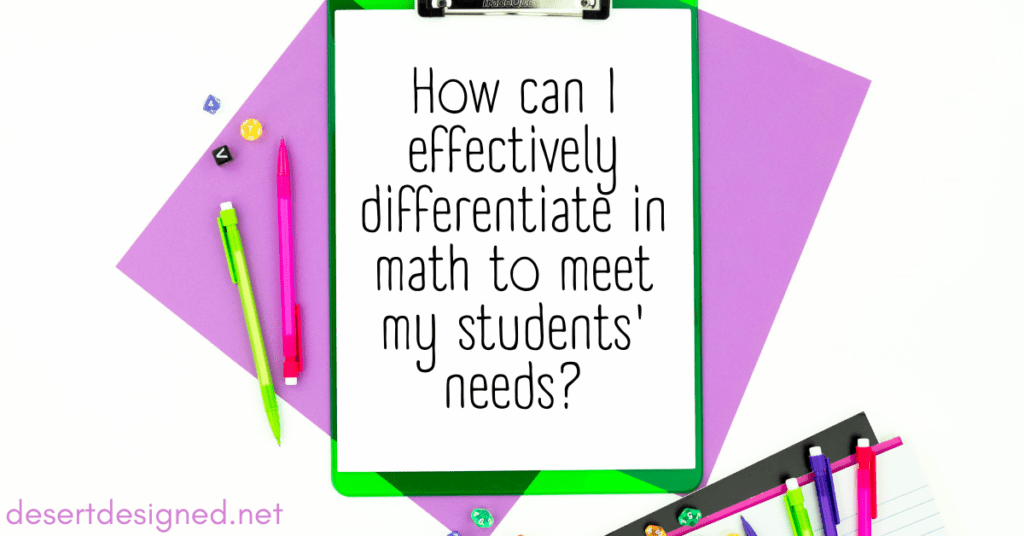
There are many reasons students’ abilities vary, but the outcome is the same. Our students come to us at different places in readiness to learn what we have to teach.
Different Pacing within the Same Ability Level
Next, we have students who require differentiation in math because although they may enter a skill with similar starting abilities, the speed at which they assimilate new information is different. This year, I have a small group of students who do not know every skill I teach in 5th grade. However, when teaching them a new skill, they need to hear the concept once and practice it a few times to attain mastery. In the meantime, the remainder of my class takes multiple examples, days of instruction, and a wide range of practice before they are ready to show mastery of each skill.

High Achievers are Bored
Often, the high achievers fall into two behavioral categories in your classroom. These students are either compliant or pose an actual behavior problem. Your compliant, bored students will sit patiently and listen. They will follow directions and go along with what you are asking them to complete. In reality, they could have taken the test last week and are bored out of their minds but are too polite, well-behaved (or scared of their parents) to tell you about it.
The other category of high-achieving bored students will exhibit off-task and disruptive behavior problems. These students might be talking to a friend (who likely needs the instruction or practice they are missing), making noises, asking to go to the bathroom, or a myriad of other disruptive, off-task behaviors.
Regardless of the behavioral outcome, our high-achievers are often bored during math and deserve better from us to help them have their academic needs met.
Struggling Students are Lost
Struggling students can often shut down when it comes to new math material. This shutting down can manifest in a variety of ways. Some struggling students will create similar behavior problems to our high achievers. Others will check out the lesson thoroughly because they miss a step and do not have the required background knowledge or vocabulary to keep pace with the lesson. Some will break down emotionally and cry or even talk out during a lesson.
Each of these manifestations of a struggling student is distressing in its way. When differentiation in math is not in place, these students can get lost in the crowd or perpetually left behind. It’s a challenge, but our job is to lift these kids up and keep them moving in the right direction.
Differentiation is Time-Consuming
One final struggle with differentiation in math instruction and practice is that it takes time and resources. The idea of differentiation for a wide variety of abilities, speeds, and personalities can seem overwhelming if you don’t know where to start. However, taking the time and effort to do differentiation work in your classroom is entirely worth it for both you and your students.
Imagine a Buzzing, Productive Math Classroom
Your classroom will have a low, productive hum when students can work at their own pace and ability level. You can see students productively working on their assigned tasks, having meaningful math discussions (discourse), and no one is crying! Over the years, I have had many students tell me that my class is the first time they ever felt good doing math. I’ve heard that this is the first time math made any sense to them. Let me tell you what an incredible feeling to get as a teacher!
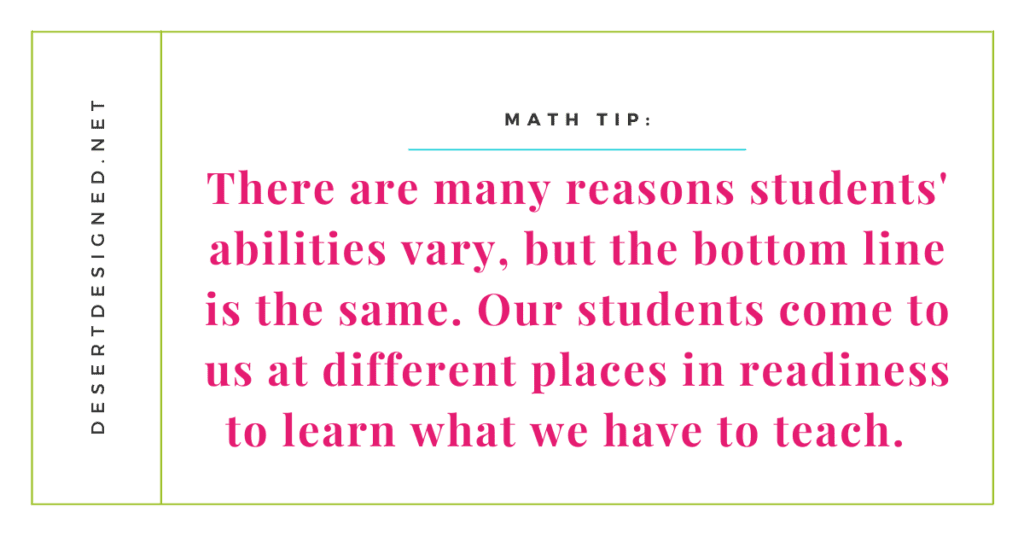
Choices for Differentiation in Math
So now you may be thinking, “OK, I see the problem. I see the need for differentiation in math. How in the world am I supposed to make this work in my classroom?” Don’t worry. You aren’t alone! Also, differentiation isn’t a one-size-fits-all process. There is an excellent chance that you will approach it from a different perspective from the teacher next door. Differentiation often takes a different form from one lesson or topic to the next, depending on the needs of my students.
Project-Based Learning
Using project-based learning activities is a great way to differentiate for your high-achieving students. Once they have demonstrated mastery of a skill or concept, allow these students to put those skills to use. You can either have them design their projects based on the math involved or purchase/use pre-made projects that are available.
As much as I love the idea of allowing students to design their projects, this will take some supervision from an adult. If you love this idea, I recommend discussing with the students tackling the project to help them get off on the right foot. It would then be necessary to check in with them daily to make sure they are both making progress and staying on track. Often, gifted students can have such lofty goals that their projects will become out of hand or unattainable, leading to frustration, so an adult guide is essential. If these particular students are a part of a Gifted and Talented Education program such as GATE, you can collaborate with the teacher in charge of the program to help keep the students on track.
If this seems like too much for you at this point in the game, I would highly recommend checking your math curriculum for projects or looking into purchasing some projects on a site such as Teachers Pay Teachers. There are many projects out there. I recommend keeping the project in line with the math skill covered by the rest of the students.
Use What’s Available
It seems obvious, but make sure you are taking the time to be acquainted with the programs already available to you from your school district. I work for a large school district, and they have purchased a wide range of tools and curriculum materials that I can use to differentiate for my students.
If I hadn’t taken the time to read the materials already available to me, I would not have realized that my math book has built-in research and STEM projects. Also, there are online pathway programs that I can use with my students. Additionally, our district uses Canvas as our Learning Management System (LMS). I have been able to import an advanced math course from Canvas Commons for my highly gifted math students to complete independently when they show mastery of the student work. Check the resources you have available from your school or district. See if any of these options are already there for you!
Guided Math Groups
An essential component of any differentiation in math is meeting with groups. There are a few strategies you can use to make sure your groups run smoothly. First, I highly recommend using flexible groupings of students. Please do not determine that one group is “low” and another is “high” for every math skill. Often, students will surprise me by either knowing or NOT knowing something. Kids who are very good at calculating numbers can often struggle with fractions or geometry.
Choose your groups based on each student’s demonstrated abilities for the current skill. Grouping students homogeneously is essential to work at a similar pace on a similar task in the group. You can focus your group time on the current needs of the students in front of you. For example, if we are working on division, my mid-range groups will practice the division with me, but I may have a group of struggling students who need to revisit the skill of subtraction. (Since subtraction is an essential foundational skill for mastering division).
Centers
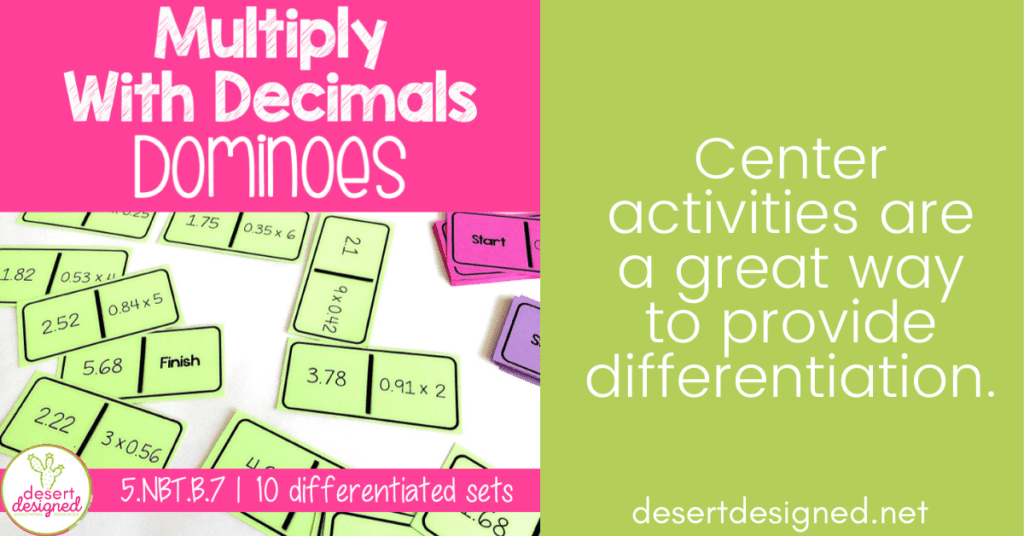
Centers are a great way to provide differentiation to your students and are super-helpful in keeping kids busy while you work with small groups. Instead of only having students do a bunch of worksheets, consider setting up skill-based centers that students can participate in to help practice the skill. Centers should be self-checking and able to be differentiated for a variety of levels. I have a bunch of self-checking dominoes games that my students complete, practicing their math skills. When I made these, I made sure to design them so that there are clearly defined levels of scaffolding available to meet the needs of all learners within the particular skill.
Boom Cards
Have you heard of Boom Cards or Boom Learning? Boom Cards are a great way to provide differentiation in math to your students. They are online task cards that provide immediate feedback to students. I love how the kids can’t just continue to practice “wrong.” If they make a mistake, the card says, “uh oh,” and requires the student to try again. If you’d like to learn more about using Boom Cards, check out this article. Or this article.
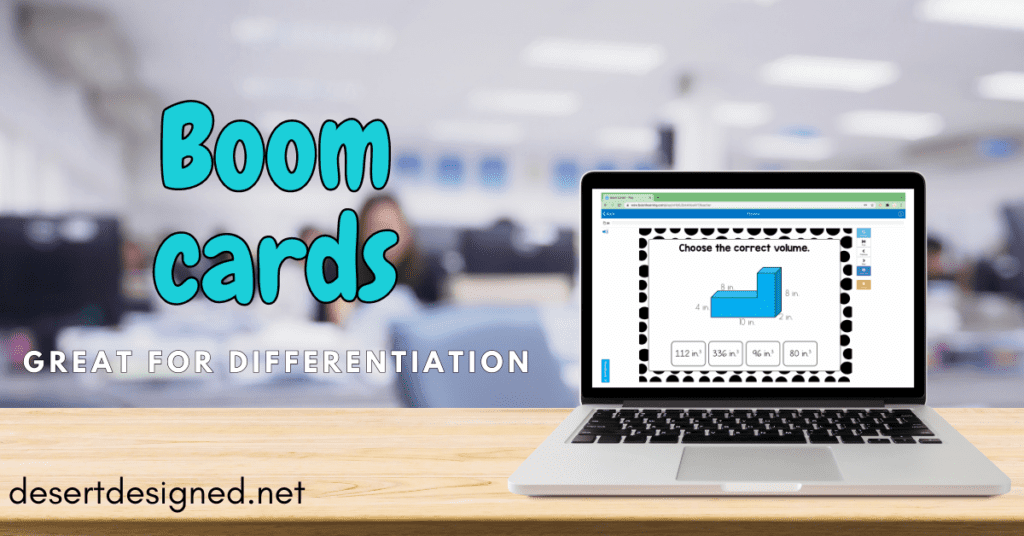
Pick a Plan and Stick to It for a While
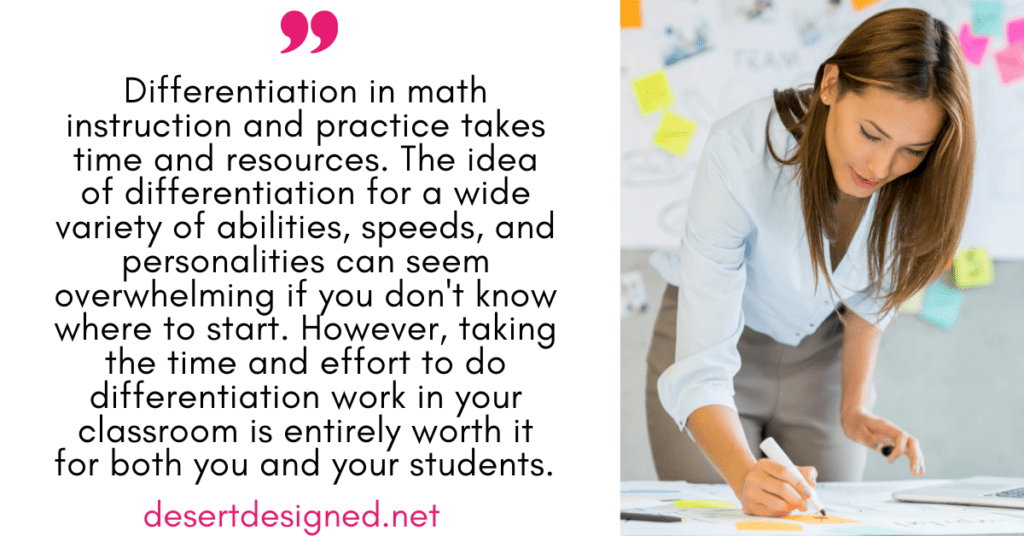
If you are new to using differentiation in creative ways with your students, I encourage you to branch out and try something new. Give the method you come up with a chance. Tweak it as you notice what is and is not working. After you find a system that works for you, I am sure you will be glad you took the time to figure out how to differentiate for your students in math.
For other math lesson planning ideas, check out my math lesson planning guide. Subscribe to my email list today to access the guide and receive monthly emails with tips to help make your life as a teacher easier!



